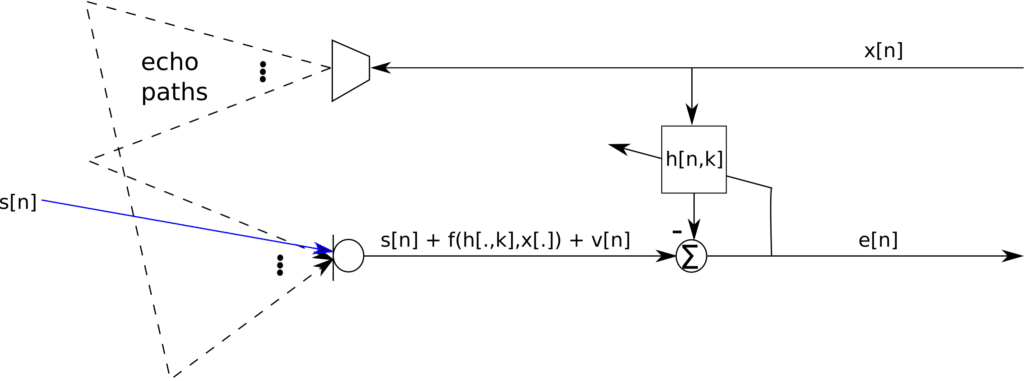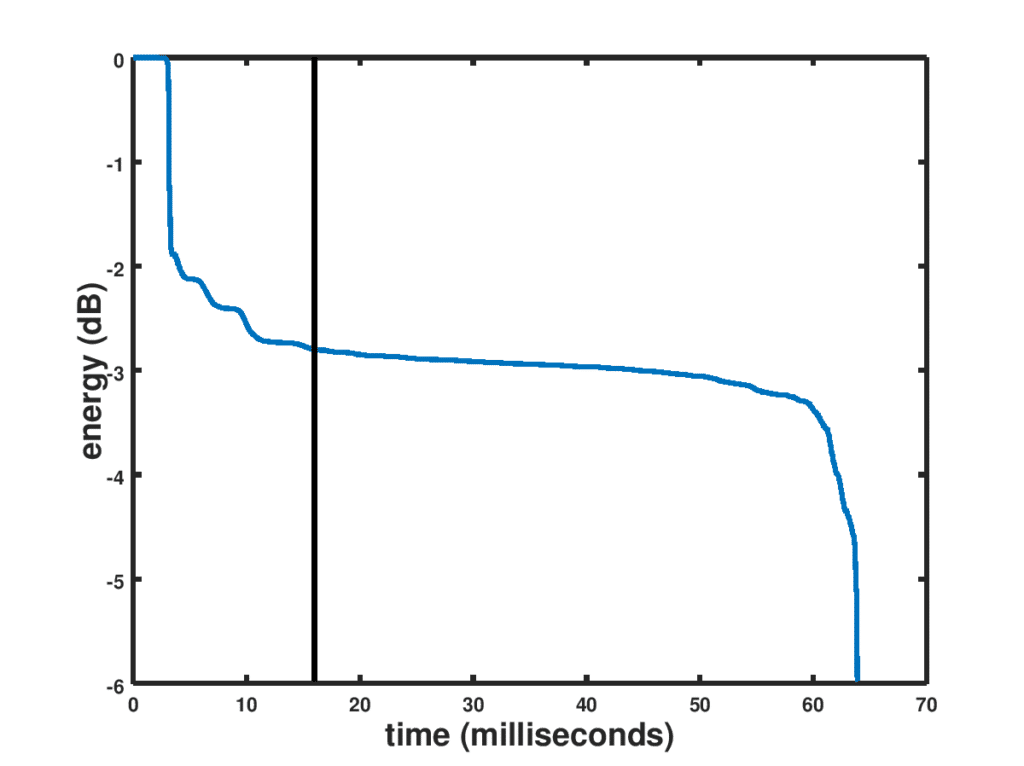Real time implementations utilize finite impulse responses (FIR) to cancel out far end echo signals. Though adequate in most cases, there is always a non-zero residual echo, which may be substantial in certain applications. Consider the systems depicted in Figure 1 below:
Figure 1: Single line AEC architecture
The received signals are of the form:
A typical normalized energy profile of a room impulse response is shown in Figure 2 showing that just about of the energy is contained in the first 20 milliseconds (~256 samples) . Thus, using an echo tail of 20m milliseconds will leave some substantial residual echo.
Figure 2: Sample room impulse response energy profile
The residual echo can be considered as a stationary interference with spectral domain cancellations being employed to reduce it.
VOCAL Technologies offers custom designed solutions for beamforming with a robust voice activity detector, acoustic echo cancellation and noise suppression. Our custom implementations of such systems are meant to deliver optimum performance for your specific beamforming task. Contact us today to discuss your solution!

